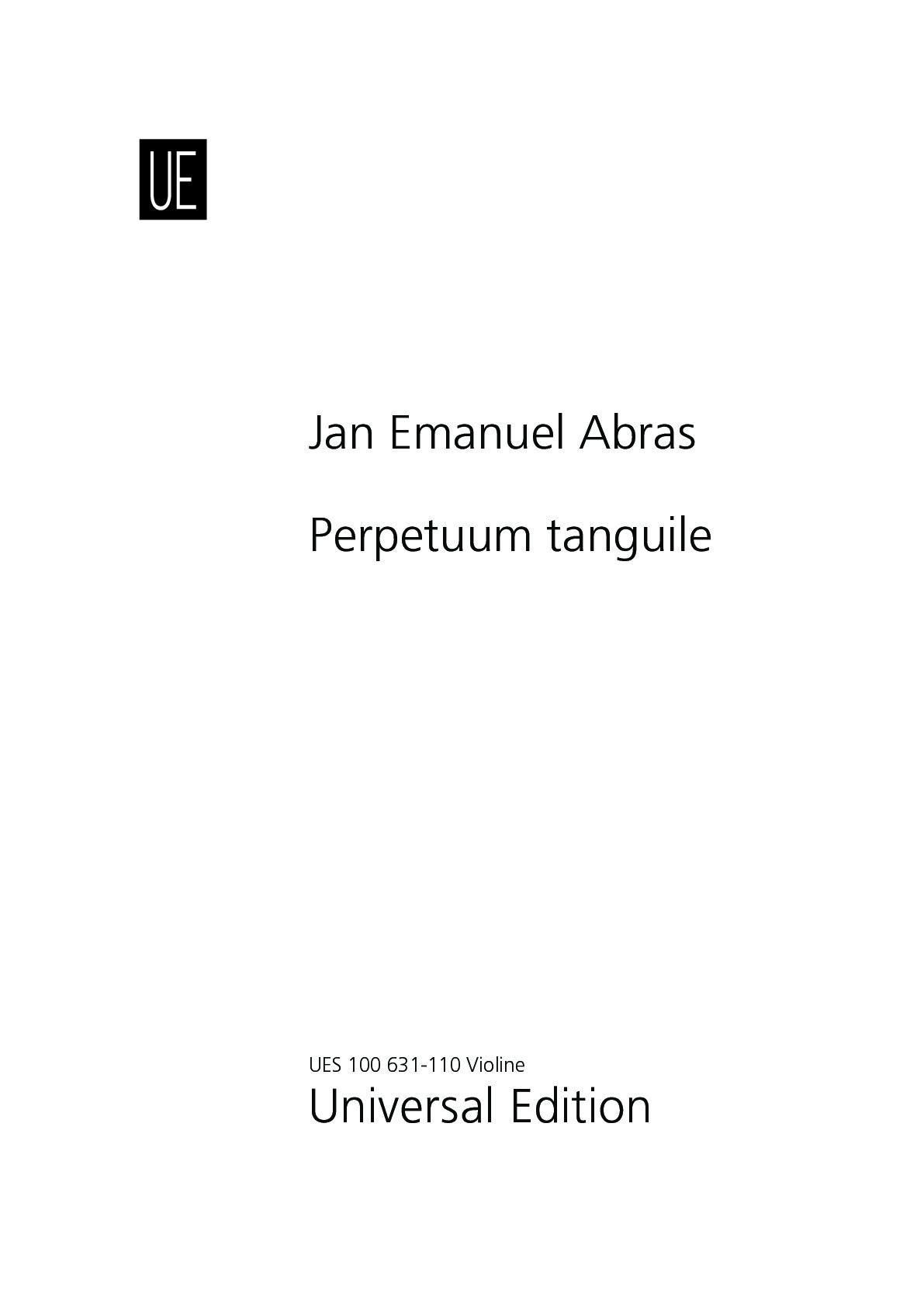

Jan Emanuel Abras
Perpetuum tanguile
Duration: 5'
Solos:
violin
Perpetuum tanguile
Sample pages
Audio preview
Video
Work introduction
Perpetuum tanguile (2013) joins virtuosic playing with intertextuality by traveling through time and space in a challenging work for solo violin. In 2013, after teaching my university students about music semiology, I decided to compose a piece that made use, in the field of classical music, of three intertextual figures (allusion, topic and quotation) while employing two phenomena related to intertextuality (music within music and intercultural fusion). As a starting point, after grabbing my violin, I selected the type of work by looking back to the 19th century, when several composers wrote pieces linked to the concept of perpetuum mobile (which means “perpetual motion” in Latin), usually applied to fast tempo works characterized by a continuous and regular flow of same value notes (some examples include pieces by Felix Mendelssohn, Ottokar Novácek, Niccolò Paganini, Johann Strauss II, Carl Maria von Weber, etc.).
To add a musical texture and structural units to this work, I turned to the 18th century, when pseudopolyphony was used on bowed instruments, and to the 17th century, where the four-bar phrase comes from. I took the coda and chromaticism from the 16th century while using techniques from the 13th to 15th centuries to develop the melodic material of this piece, created from modes used in Gregorian chant since the 9th century and linked to musical scales from Ancient Greece. I then incorporated into this work a 3–3–2 accent pattern, associated with tango music and Astor Piazzolla, before adding a quotation of the traditional Philippine song Leron Leron Sinta. Thus, Perpetuum tanguile bears a title that contains a triple play of words: “tanguile” is the combination of “tango” and “mobile”, but also the common name of the Philippine plant Shorea polysperma.
My work Perpetuum tanguile is dedicated to Édua Zádory and was premiered by her in Vienna (Austria), on 26 July 2014, at the Brick-5 Society for the Promotion of Multimedia Art and Technology. During this first performance, which took place during an event called Sound in Image (Klang im Bild), artist Wolfgang Semmelrock created a live painting on stage. Since its European premiere, this piece has also been programmed in the Americas at events like the Darwin Vargas International Festival of Contemporary Music (Chile) and performed in cities such as Buenos Aires and Mendoza (Argentina), Viña del Mar (Chile), etc. Perpetuum tanguile was included on the CD Heavy (2017), performed by Édua Zádory, recorded at the Liszt Center Raiding (Austria) and released by GENUIN classics (GEN 17473), Leipzig (Germany). This CD is included in the Naxos Music Library (Japan).
Dr. Jan Emanuel Abras, Ph.D. (born 1 February 1975 in Stockholm, Sweden)

